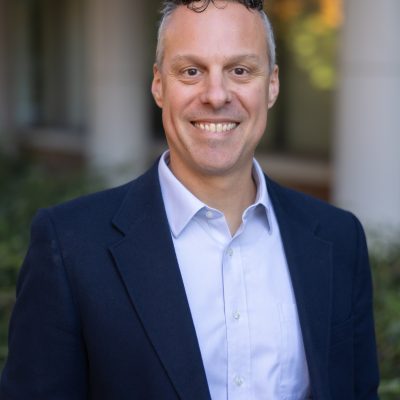Can Medicaid be a solution to the problem of underinsurance?
December 7, 2023
By Ethan Chupp, UNC Gillings School Communications Fellow

Aniyar Izguttinov

Dr. Justin Trogdon
The Affordable Care Act (ACA), passed in 2010, substantially decreased the number of people without health insurance nationwide. New research from Aniyar Izguttinov, MPH, and Justin G. Trogdon, PhD, at the UNC Gillings School of Global Public Health, found some evidence that the ACA expansion of Medicaid eligibility also may have decreased the number of underinsured individuals.
Medicaid is a program to give government-run health insurance to low-income individuals. Unlike other insurers, Medicaid is run at a state level, and the program differs from state to state. The 2010 passage of the ACA made federal money available for states to expand the eligibility for Medicaid to include families with incomes under 138% of the Federal Poverty Line (around $35,000 for a family of 4 in 2019). Some states accepted this money and expanded their program, but some did not.
The expansion of Medicaid, which began in 2014, is recognized as the primary way the ACA reduced uninsurance rates. However, a less-explored question is whether underinsurance, health insurance that fails to meet essential health care needs, experienced a similar decline. “Just having insurance is not enough. If the quality of the insurance is low, then it just leads to underinsurance,” said Izguttinov, a doctoral student in the Department of Health Policy and Management.
Izguttinov and Trogdon, along with doctoral student Juan Yanguela, investigated underinsurance in a previous paper, titled “Cost-based Underinsurance After the Affordable Care Act.” The study found that those on Medicaid were significantly less likely to experience underinsurance than other insurance types. But their new study, published at INQUIRY: The Journal of Health Care Organization, Provision, and Financing, sought more direct evidence on the effect of ACA expansion.
Izguttinov and Trogdon investigated this by comparing underinsurance rates between 2010 and 2019 in 26 states that expanded Medicaid and 16 that did not. The researchers evaluated underinsurance during this period using two key metrics: the number of people facing excessive out-of-pocket costs and the number of people who had to delay or forgo necessary treatments due to cost.
From the baseline of 2010, the data revealed a consistent drop in underinsurance rates across both expansion and non-expansion states. The first four years after Medicaid expansion (between 2014 and 2017) showed no discernible difference in how much the underinsurance rate decreased between the expansion states and the non-expansion states.
“The expansion of Medicaid may not be the sole factor influencing underinsurance rates. The availability and accessibility of private insurance plans offered through insurance marketplaces and the overall dynamics of the insurance market might have influenced insurance choices ,” added Izguttinov. “Other elements of the ACA may have had a positive impact on non-expansion states as well. For instance, one of the important provisions under the ACA was the removal of out-of-pocket costs for preventative care services.”
However, between 2018 and 2019, the data began to show disparities in underinsurance rates between expansion and non-expansion states. The difference was especially pronounced in individuals delaying or forgoing treatment due to cost. In expansion states, residents were more than five percentage points less likely to be underinsured than those in states with no expansion.
Izguttinov and Trogdon suggest that the four-year lag between roll-out and the effect on underinsurance could be due to the slow launch of the program and public confusion about who was eligible.
Izguttinov and Trogdon conclude that by 2019, Medicaid expansion may have protected 5.3 million of the nearly 100 million adults under 65 in those states from the risk of underinsurance. With North Carolina beginning its expansion in December, the benefits could be far-reaching. But it may take some time to see the full effect.
Contact the UNC Gillings School of Global Public Health communications team at sphcomm@unc.edu.
